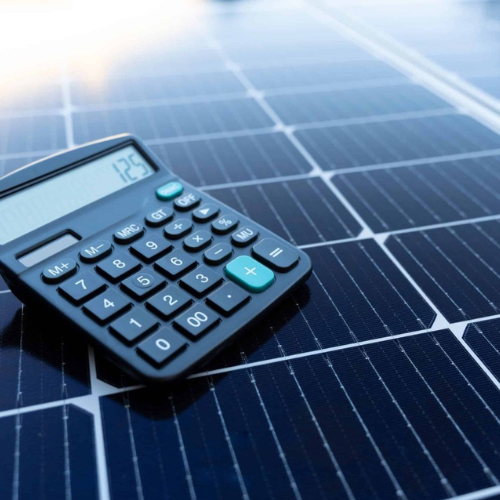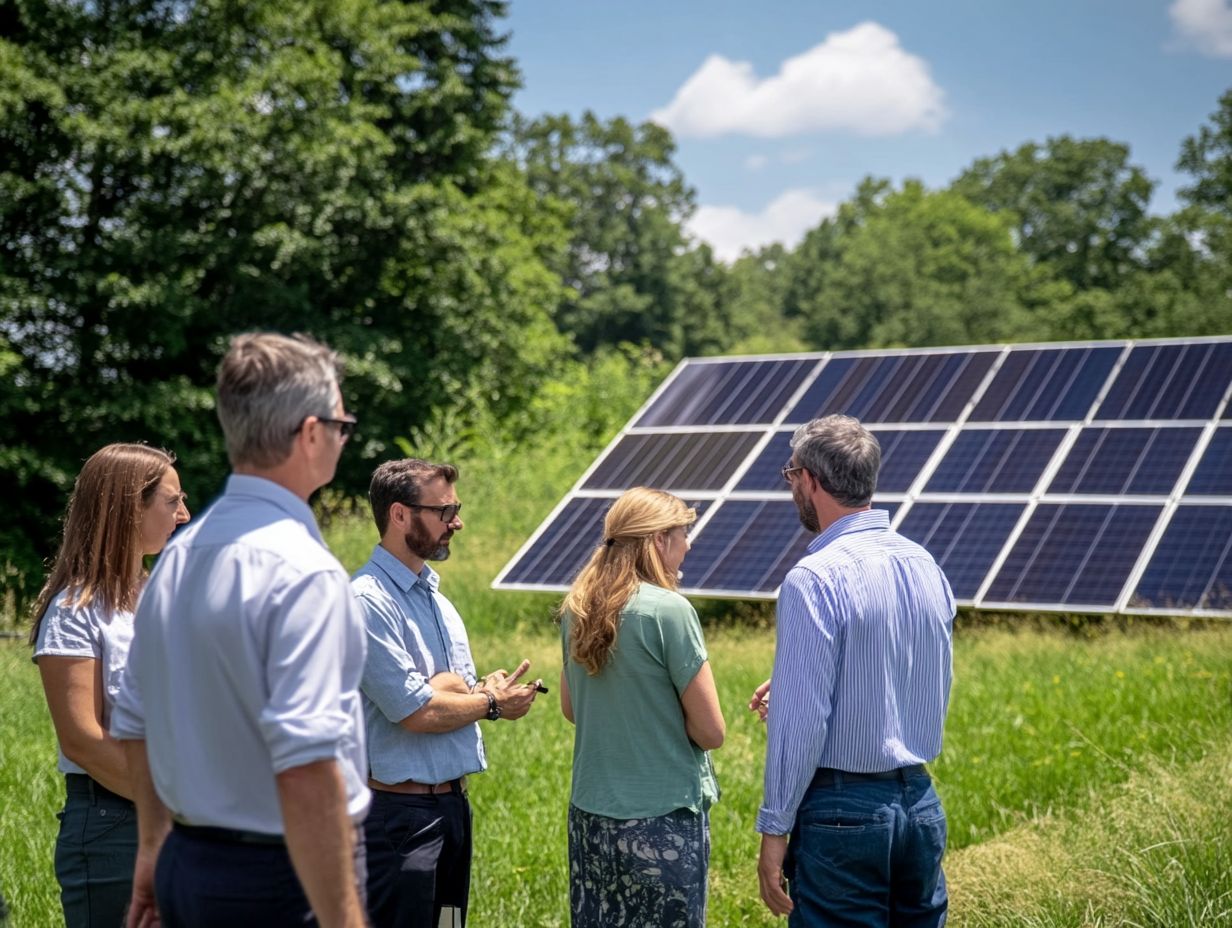Contents
- 1 Placement and Orientation for Maximum Sun Exposure
- 2 Choosing the Right Inverter for Efficiency
- 3 Maintenance and Cleaning for Optimal Performance
- 4 Integrating Energy Storage Solutions
- 5 Monitoring and Managing Energy Output
- 6 Utilizing Tracking Systems for Enhanced Efficiency
- 7 Maximizing Energy Output with Smart Grid Integration
- 8 FAQs
When you consider investing in solar energy, the 700W solar panel stands out as a powerful option for both residential and commercial applications. This type of panel is designed to convert sunlight into electricity efficiently, providing a substantial amount of power for various needs. With advancements in solar technology, these panels are not only more efficient but also more compact, allowing you to harness solar energy without requiring excessive space.
Understanding the specifications and capabilities of a 700W solar panel is crucial for making informed decisions about your energy needs. The 700W solar panel typically consists of high-efficiency photovoltaic cells that capture sunlight and convert it into usable electricity. These panels are often made from monocrystalline or polycrystalline silicon, each offering distinct advantages.
Monocrystalline panels tend to have higher efficiency rates and a longer lifespan, while polycrystalline panels are generally more affordable but slightly less efficient. By familiarizing yourself with these options, you can choose the right type of panel that aligns with your energy goals and budget. Get your free solar assessment by visiting https://www.solarenergy4u.org/free-pro-advice/.
Key Takeaways
- 700W solar panels are a powerful and efficient option for generating renewable energy
- Proper placement and orientation of solar panels is crucial for maximizing sun exposure and energy production
- Choosing the right inverter is essential for converting solar energy into usable electricity with high efficiency
- Regular maintenance and cleaning of solar panels is necessary to ensure optimal performance and longevity
- Integrating energy storage solutions can help store excess energy for use during low sunlight periods
Placement and Orientation for Maximum Sun Exposure
Optimal Placement
This often means placing them on a south-facing roof or an open area where trees or buildings do not cast shadows. By ensuring that your panels are positioned to capture direct sunlight, you can significantly enhance their energy output.
The Importance of Orientation
Orientation is equally important; the angle at which your panels are installed can greatly influence their performance. In general, solar panels should be tilted at an angle that corresponds to your geographical latitude to optimize sun exposure throughout the year.
Seasonal Adjustments
For instance, if you live in a region with a higher latitude, a steeper angle may be beneficial during winter months when the sun is lower in the sky. Conversely, a flatter angle may be more effective in summer when the sun is higher. By carefully considering both placement and orientation, you can ensure that your 700W solar panel operates at peak efficiency.
Choosing the Right Inverter for Efficiency

Selecting the right inverter is a critical step in optimizing the performance of your 700W solar panel system. The inverter is responsible for converting the direct current (DC) generated by your solar panels into alternating current (AC), which is what most household appliances use. There are several types of inverters available, including string inverters, microinverters, and power optimizers, each with its own set of advantages and disadvantages.
String inverters are commonly used for their simplicity and cost-effectiveness, making them a popular choice for many homeowners. However, if your solar panels are subject to shading or varying orientations, microinverters may be a better option as they allow each panel to operate independently, maximizing energy production. Power optimizers can also enhance performance by ensuring that each panel operates at its optimal level.
By carefully evaluating your specific needs and conditions, you can choose an inverter that will enhance the efficiency of your 700W solar panel system.
Maintenance and Cleaning for Optimal Performance
| Task | Frequency | Notes |
|---|---|---|
| Clean air filters | Every 1-3 months | Improves air quality and system efficiency |
| Inspect and clean coils | Annually | Prevents dirt buildup and ensures proper heat transfer |
| Check refrigerant levels | Annually | Ensures optimal cooling performance |
| Inspect ductwork | Every 2-5 years | Identify and repair leaks for improved efficiency |
To ensure that your 700W solar panel system continues to perform at its best, regular maintenance and cleaning are essential. Over time, dust, dirt, and debris can accumulate on the surface of the panels, obstructing sunlight and reducing their efficiency. It’s important to establish a cleaning schedule that suits your environment; for instance, if you live in a dusty area or near trees that shed leaves, you may need to clean your panels more frequently.
Cleaning your solar panels is relatively straightforward and can often be done with just water and a soft brush or sponge. Avoid using harsh chemicals or abrasive materials that could scratch the surface of the panels. Additionally, it’s wise to inspect your system periodically for any signs of damage or wear, such as loose connections or cracked glass.
By taking proactive steps in maintenance and cleaning, you can help ensure that your 700W solar panel system operates efficiently for years to come.
Integrating Energy Storage Solutions
Incorporating energy storage solutions into your solar panel system can significantly enhance its overall efficiency and reliability. Energy storage systems, such as batteries, allow you to store excess electricity generated during sunny days for use during periods of low sunlight or high demand. This capability not only maximizes your energy independence but also provides a buffer against fluctuations in energy supply.
When selecting an energy storage solution, consider factors such as capacity, discharge rate, and lifespan. Lithium-ion batteries are popular due to their high energy density and long cycle life, making them an excellent choice for residential applications. Additionally, integrating energy storage with your 700W solar panel system can enable you to take advantage of time-of-use rates offered by utility companies, allowing you to use stored energy during peak pricing periods.
By investing in energy storage solutions, you can optimize your solar energy system’s performance and enhance your overall energy management strategy.
Monitoring and Managing Energy Output

Monitoring and managing the energy output of your 700W solar panel system is crucial for maximizing its efficiency and ensuring that it meets your energy needs. Many modern solar systems come equipped with monitoring software that allows you to track real-time energy production and consumption data. This information can help you identify patterns in energy usage and make informed decisions about when to use electricity or store it for later use.
By regularly reviewing your energy output data, you can also detect any potential issues with your system early on. For example, if you notice a sudden drop in energy production, it may indicate that your panels need cleaning or that there is a malfunction in the inverter. Additionally, some monitoring systems offer alerts or notifications when performance dips below expected levels, allowing you to take prompt action.
By actively managing your energy output, you can ensure that your 700W solar panel system operates efficiently and effectively meets your energy demands.
Utilizing Tracking Systems for Enhanced Efficiency
To further enhance the efficiency of your 700W solar panel system, consider utilizing tracking systems that adjust the position of the panels throughout the day to follow the sun’s path. Solar trackers can significantly increase energy production by ensuring that the panels maintain optimal angles relative to the sun’s position. There are two main types of tracking systems: single-axis trackers and dual-axis trackers.
Single-axis trackers rotate on one axis, typically oriented north-south or east-west, allowing them to follow the sun’s movement from east to west throughout the day. Dual-axis trackers offer even greater flexibility by adjusting both vertically and horizontally, enabling them to capture sunlight at various angles throughout the year. While tracking systems require an initial investment and may involve additional maintenance, they can yield substantial increases in energy output over time.
By incorporating tracking technology into your solar setup, you can maximize the efficiency of your 700W solar panel system.
Maximizing Energy Output with Smart Grid Integration
Integrating your 700W solar panel system with smart grid technology can further enhance its efficiency and effectiveness in meeting your energy needs. Smart grids utilize advanced communication technologies to optimize electricity distribution and consumption across the grid. By connecting your solar system to a smart grid, you can take advantage of real-time data on energy demand and supply fluctuations.
This integration allows for better management of energy resources, enabling you to sell excess electricity back to the grid during peak demand periods when prices are higher. Additionally, smart grid technology can facilitate demand response programs that incentivize users to reduce their energy consumption during peak times in exchange for lower rates or credits on their utility bills. By leveraging smart grid integration with your 700W solar panel system, you can maximize energy output while contributing to a more sustainable and efficient energy ecosystem.
In conclusion, investing in a 700W solar panel system offers numerous benefits for both residential and commercial users looking to harness renewable energy effectively. By understanding how these panels work, optimizing their placement and orientation, selecting appropriate inverters and storage solutions, maintaining them properly, monitoring their output, utilizing tracking systems, and integrating with smart grids, you can significantly enhance their performance and efficiency. As you embark on this journey toward sustainable energy independence, each step you take will contribute not only to reducing your carbon footprint but also to achieving long-term savings on energy costs.
If you are considering investing in 700 watt solar panels, you may also be interested in learning more about how to save big with solar energy. This article from Solar Energy 4U provides valuable tips and information on maximizing the benefits of solar power for your home or business. Additionally, understanding the conversion of DC to AC electricity is crucial for effectively utilizing solar energy. Check out Solar Energy 4U’s article on DC-AC electricity to learn more about this important aspect of solar panel systems.
FAQs
What are 700 watt solar panels?
700 watt solar panels are photovoltaic panels that are designed to convert sunlight into electricity at a rate of 700 watts. These panels are typically used in residential and commercial solar energy systems to generate power for various applications.
How do 700 watt solar panels work?
700 watt solar panels work by utilizing photovoltaic cells to convert sunlight into direct current (DC) electricity. This electricity is then converted into alternating current (AC) by an inverter, which can be used to power electrical devices and appliances.
What are the benefits of using 700 watt solar panels?
The benefits of using 700 watt solar panels include reducing electricity bills, decreasing reliance on fossil fuels, reducing carbon emissions, and potentially qualifying for government incentives and rebates for renewable energy installations.
What can 700 watt solar panels power?
The power generated by 700 watt solar panels can vary depending on factors such as sunlight intensity and panel efficiency. In general, a 700 watt solar panel system can power small appliances, lighting, electronics, and other low to medium power devices.
How much space do 700 watt solar panels require?
The physical size of 700 watt solar panels can vary depending on the specific model and manufacturer. However, a typical 700 watt solar panel may require approximately 40-50 square feet of space for installation.
Are 700 watt solar panels suitable for off-grid applications?
700 watt solar panels can be suitable for off-grid applications, such as remote cabins or RVs, when used in combination with energy storage solutions like batteries. However, the specific power requirements and energy usage of the off-grid system should be carefully considered when choosing the appropriate solar panel size.








